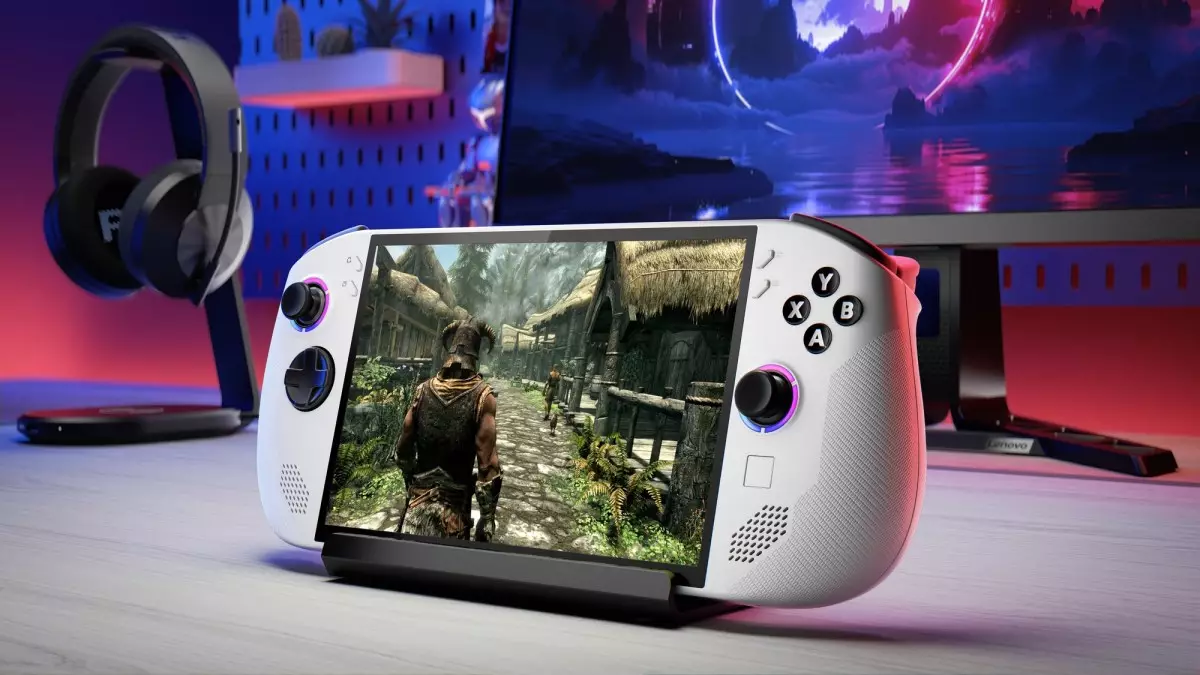The gaming landscape is in a constant state of transformation, and with the advent of handheld devices, competition has never been more intense. Valve’s release of SteamOS with the Steam Deck was a groundbreaking move, positioning itself as a formidable alternative to traditional gaming systems like Windows. Recently, the spotlight has shifted towards Lenovo’s latest introduction, the Legion Go S, showcasing remarkable potential in this burgeoning market. As the rivalry heats up, we find ourselves at a crucial juncture for handheld gaming, with SteamOS evolving into a legitimate contender against Windows.
At CES 2025, Lenovo introduced the Legion Go S, a handheld device that marks a departure from its predecessor, the original Legion Go. This new model features an 8-inch display framed by traditional side controllers, effectively streamlining its design. The absence of detachable controllers and a kickstand may raise questions about versatility, but the emphasis on a more compact yet traditional form could appeal to those seeking portability without sacrificing functionality. Users will appreciate the careful consideration put into the ergonomics of the device, which is vital for extended gaming sessions.
The Legion Go S offers multiple configurations, allowing consumers the freedom to choose between two AMD processors: the Ryzen Z2 Go for budget-conscious gamers and the Ryzen Z1 Extreme for power users. This dual-chip strategy demonstrates Lenovo’s commitment to catering to a diverse audience, thereby solidifying its position in the competitive handheld gaming market. Additionally, the option to select between SteamOS and Windows 11 offers flexibility, addressing the needs of both casual players and hardcore gamers alike.
The debate surrounding SteamOS versus Windows 11 is multifaceted. SteamOS provides a user-friendly interface and a design specifically tailored for gaming, offering a significantly improved out-of-the-box experience. Many gamers praise its seamless support for sleep/wake functions, which is crucial for players on-the-go. However, the reality is that Windows 11 still holds its ground, especially for those who rely on Xbox Game Pass or engage in multiplayer games requiring specific anti-cheat protocols exclusive to the Microsoft ecosystem.
Lenovo has smartly positioned the Legion Go S as both a SteamOS-powered device and a Windows-compatible option, allowing users to select an operating system that aligns with their gaming habits. This not only broadens the potential market for Lenovo but also fuels the ongoing discussion about the ideal software environment for handheld gaming.
In terms of hardware, the Legion Go S boasts impressive specifications. The 8-inch display with a resolution of up to 1920×1200, accompanied by a 120Hz variable refresh rate, ensures vibrant visuals and fluid gameplay. The inclusion of a 55Wh battery indicates Lenovo’s focus on enhancing battery life, an essential factor for gamers who require mobility. The device’s weight, at 730g (1.61 pounds), strikes a balance between sturdiness and portability.
Starting from $499 for the Z2 Go configuration with SteamOS, the price point is competitive. The Z1 Extreme variant, priced at $729, offers more power with 32GB of RAM, catering primarily to performance-focused gamers. This thoughtful pricing structure speaks to Lenovo’s understanding of market segmentation, allowing them to attract a diverse audience based on varying gaming demands.
As the Legion Go S enters the market, it is poised to nudge the SteamOS ecosystem forward, particularly as Valve collaborates closely with Lenovo to optimize the software for this new model. This relationship highlights a larger narrative within the gaming industry—the importance of interoperability and ecosystem growth over competition for market dominance.
While it is easy to view the Legion Go S as merely a competitor to the Steam Deck, it represents something more substantial: an evolution in handheld gaming that reaches beyond individual devices to create a vibrant gaming ecosystem. With plans for continued advancements, including updates to the original Legion Go and prototypes of future iterations, Lenovo aims to reinforce its commitment to this competitive space.
With its diverse offerings, pricing strategy, and compatibility with both SteamOS and Windows, Lenovo’s Legion Go S could very well be the catalyst for a new chapter in handheld gaming. As we witness Valve’s strategic collaborations and the ongoing enhancements to SteamOS, it’s an exciting time to be a part of this evolving universe of gaming technology.

